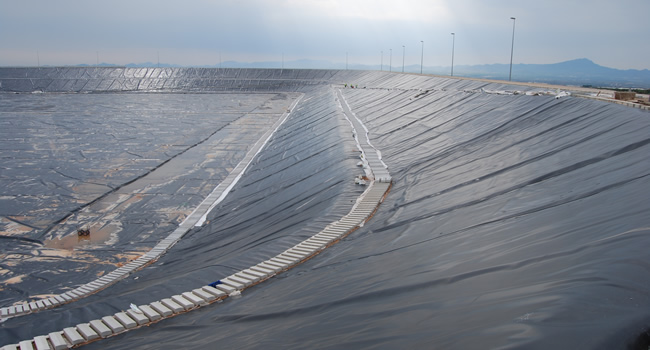In the intricate area of waste management, the containment of hazardous materials is an important link. Geomembranes have emerged as a valuable tool in this discipline and serve a critical function in the preservation of the environment and human health. This paper will discuss at length the many ways that geomembranes can be used in waste management, particularly in containing hazardous materials.

Geomembranes: Barriers to Prevent Pollution
Geomembranes are impermeable thin sheets which play an essential role in barrier in waste management facilities. The majority of the use of geomembrane is for leach protection of hazardous material to soil, water, and air. In landfill areas, for example, where vast amounts of rubbish, such as toxic chemicals, are capped, geomembranes are laid down on the bottom and along the edge of landfill. A barrier is created that prevents potentially hazardous chemicals from leaking into the ground and contaminating the groundwater, a precious source of drinking water in most towns.
These membranes are also used in toxic waste storage facilities. Whether a chemical storage tank or a waste treatment plant, geomembranes provide extra confidence. Geomembranes make sure that dangerous liquids and gases are not leaked out, and thereby the chance for environmental pollution and health hazards for locals in the area.
Different Types of Geomembranes and Their Suitability
There are a number of types of geomembranes found in the market, and every type of geomembrane has some specific characteristics and applications. Hdpe geomembrane is one among them. 20 mil hdpe geomembranes are highly resistant and chemical-resistant. The 20-mil thickness is a tough barrier and is therefore very suitable for applications that call for a high degree of protection, for example, hazardous waste landfills.
HDPE geomembranes are also UV-resistant, in that they will not become compromised by long exposure to the sun. Because most waste management facilities are actually open-air buildings, this factor is important. Also, as they are flexible, the HDPE geomembranes are easy to place around unevenly-sized waste storage.
Economical Solution to Waste Management
Geomembranes not only offer good protection, but they are also economical in waste management. Although the initial cost of buying a geomembrane can be high, it is a good long-term investment. Through prevention of contamination, geomembranes prevent costly groundwater remediation, soil cleanup, and legal liabilities.
Additionally, with geomembranes sale promotions available, waste management companies can buy such vital material at reduced prices. Utilization of such offers can significantly contribute to reducing the overall cost of a waste management project. It also enables small waste management plants or local governments with limited budgets to implement adequate containment measures.
Installation and Maintenance of Geomembranes
Correct installation and care of geomembranes is important to their success. The geomembrane needs to be installed with care so that it is flat and not creased and ripped. The joints at which various sections of geomembrane are joined need to be welded or sealed so that they form a continuous, unbroken wall. In some cases, a geotextile layer is spread over or beneath the geomembrane so as to protect it from puncturing and to improve its performance.
Regular maintenance is also necessary so that any potential damage is detected early. Checks should be performed to see whether there are signs of wear and tear, such as holes or cracks. In case damage is detected, it should be fixed immediately to preserve the integrity of the barrier system. This preventative maintenance can lengthen the lifespan of the geomembrane and keep it preventing harmful substances effectively.
Future Developments in Geomembranes for Waste Containment
With the tightening of environmental regulations and increasing demand for green waste management, utilization of geomembranes in waste management will continue to become increasingly essential. The future will witness geomembrane technology being more performant, robust, and affordable.
Even more advanced materials and modes of manufacturing will be created to produce even more advanced geomembranes with greater resistance to toxic chemicals. Additionally, use of geomembranes in innovative landfilling waste disposal methods such as bioreactor landfills will become progressively common, rendering them an even bigger asset towards the agenda of environmental conservation.
Conclusion
In conclusion, geomembranes are an important part of waste management, especially in excluding poisonous substances and preventing harmful material from entering landfills. Geomembranes’ effectiveness in preventing pollution, the vast range of products available, from 20-mil thick HDPE geomembranes, the affordability, and maintenance/installation requirements all come together to demonstrate how critical geomembranes are in preserving the environment. With the proper utilization of geomembranes, landfills can be operated safer and more environmentally friendly, thereby saving the environment as well as public health. Geoseal has a variety of geomembranes, please call us for any information you may need.
